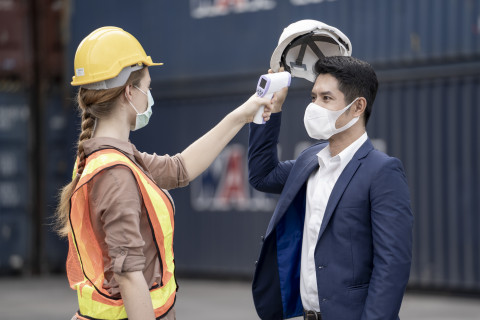Passing Rates
Safety in the World of Covid-19
Back in early January, I started watching what was going on in China with an outbreak of a novel virus. At the time, it got a bit of a mention on the news here and there. But it was there, and we were here, so no big deal; nothing to worry about. Fast forward to late March, and the world of a Safety Professional seems to have changed quite a bit in response to what we now know as SARS-CoV-2.
Working in the health care industry gives me a unique perspective as not only are our employees going to be susceptible to the same community spread as everyone else, but they are actually the ones who will be on the front line of the battle against this disease. Over the past several months, not only have lives changed for many people as they deal with this global pandemic, but the way in which safety professionals operate has changed as well.
A few of my key observations of the past several months:
- When faced with a global pandemic, regulatory requirements seem to fly out of the window
- Most safety professionals live in a world of regulations. Whether it is OSHA, EPA, DOT or any other number of regulatory or accreditation agencies, one of our key responsibilities is to help keep our organizations compliant. However, it seems like most organizations that are focused on the safety of workers or the public are more than willing to ignore or not enforce their regulations during this time. OSHA has published several enforcement guidelines related to respiratory protection allowing organizations to forego annual fit testing. The FDA and NIOSH have approved the use of expired or non-NIOSH approved respirators for employee use. The Joint Commission has come out and stated that they will not be retroactively reviewing compliance with many standards as part of their triennial survey process. And numerous other local and state regulatory agencies have put various other licensing and regulatory requirements on hold. Sure, there are reasons for some of this regulatory flexibility, but it does make our jobs tougher if you are facing an organizational culture more focused on “compliance” than minimizing risk.
- Safety professionals are being called in to fill the role of infection preventionists
- I’m fortunate that, in working for a health system, we have an entire department that is responsible for infection control and prevention. But in reading Facebook posts in safety groups and LinkedIn discussions, it’s clear that safety professionals are being drawn in to fill a role that many are unprepared or untrained to perform. I think before March 2020, not many safety professionals even knew what the phrase “contact tracing” meant, but now many are being tasked with developing full-blown SARS-CoV-2 prevention plans for their facilities. I think that this pandemic is going to be going on for quite some time, so it is time to ensure we have the training and resources we need to act to fill this role.
- There is a surprising lack of understanding of the entire “masking” issue among safety “professionals”
- I can hardly browse a safety group on Facebook or LinkedIn without seeing a debate on why people should not be wearing face coverings (usually started by what I will call an “anti-masker”. This shouldn’t even be a discussion or a debate among safety professionals: wear your face coverings. No, wearing a face covering is not going to expose you to an oxygen-deficient environment as one “viral” YouTube video by a purported safety person tried to demonstrate with their use of an oxygen meter inside their mask. No, a face covering is not intended to filter out contaminants in the air around you. No, a face covering is not a form of social control being propagated by the Illuminati or some New World Order.
- Are face coverings the most comfortable thing to wear? Of course not. Would I prefer not to wear a mask when I go out grocery shopping? Of course. But wearing a face covering is just one simple thing that can help reduce the risk of infection. A face covering, whether a surgical mask or a cloth face covering, is intended to prevent you from spreading your virus particles to others. This is something I don’t think safety “professionals” are understanding. Face masks are not a form of Personal Protective Equipment (PPE). But this doesn’t make them ineffective. The mandated use of face coverings would be an example of an administrative control, which anyone familiar with the hierarchy of controls would know is actually a preferred control compared to PPE. Increasing social distance, staying home when sick, and wearing a face covering, are simple changes in your behavior that you can make to keep others safe, but they only work if everyone is doing it. Will it reduce risk to zero? No, but there is no such thing as zero risk when you are alive.
Hopefully, things start to turn around across the United States. We are currently seeing our surge of patients in the Greater Houston area, which is actually seeing mostly younger and healthier people getting infected. But until we have an effective vaccine (which is still at least a year away, if one actually does get to be developed) or we see some amount of herd immunity developed or some reduction in the pathogenicity of the virus, we are going to be dealing with these issues for quite some time.
{title}
{introtext}{readmore}
Read more from Dr. Pate on his blog: Unsafe Musings of a Safety Professional
The views and opinions expressed in this article are those of the author and do not necessarily reflect the official policy or position of Bowen EHS.
When you subscribe to the blog, we will send you an e-mail when there are new updates on the site so you wouldn't miss them.


